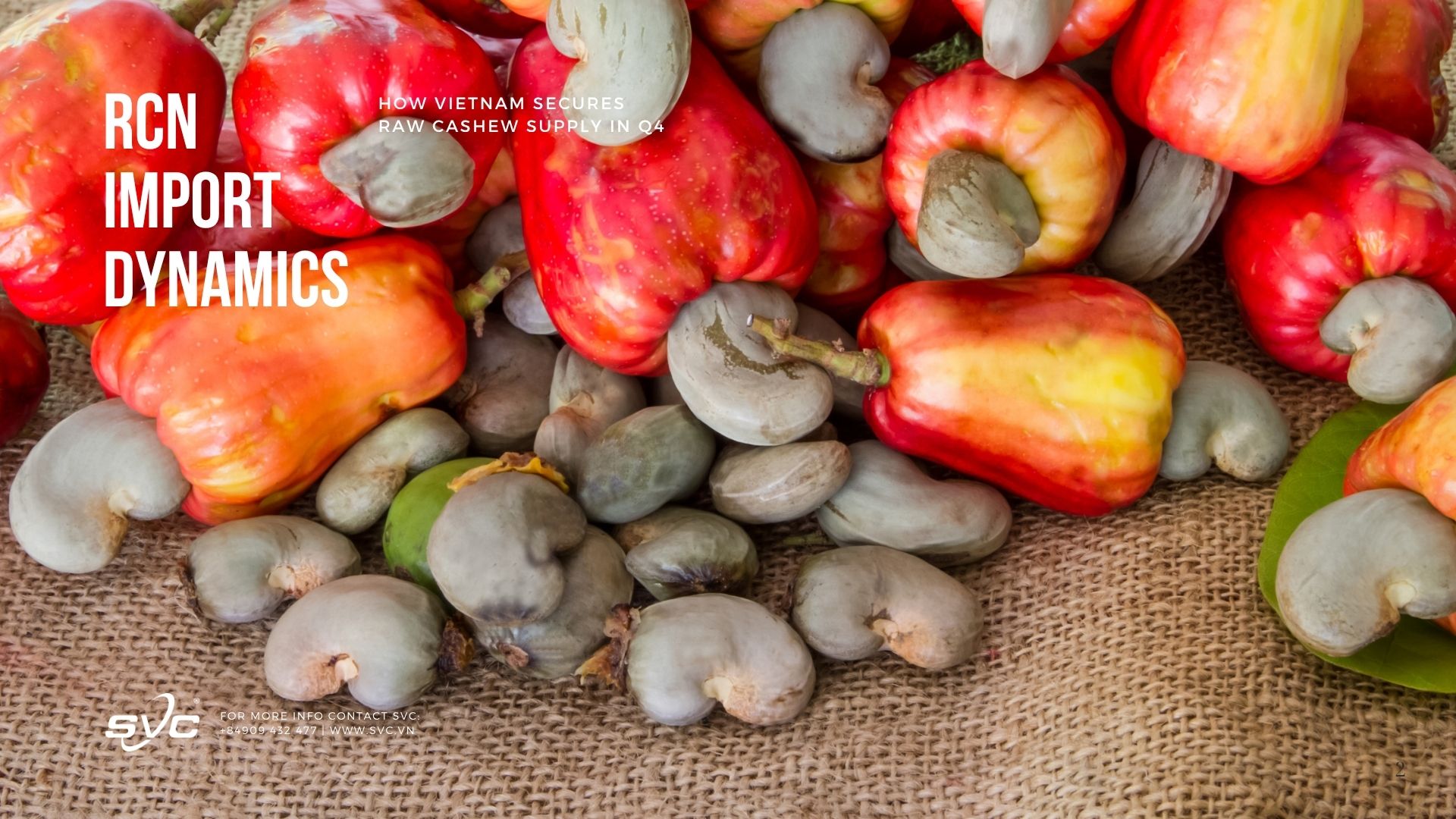🌍 Global Raw Cashew Context
As the world’s largest cashew processor and exporter, Vietnam depends heavily on raw cashew nut (RCN) imports to sustain production.
Entering Q4/2025, while domestic harvesting has ended, the focus now shifts to import strategies — especially from Africa and Cambodia — to ensure continuous factory operations and stable FOB supply.
According to VINACAS and AfriCashewSplits, Vietnam imports nearly 70% of its RCN from Africa, with the rest coming from Cambodia, Indonesia, and domestic sources. Maintaining this balance is crucial as Q4 marks the global shipping high season, often accompanied by logistics challenges and fluctuating freight costs.
📦 Vietnam’s RCN Import Structure (as of September 2025)
| Origin | Share of Total Imports | Avg. Price (USD/MT) | Notes |
|---|---|---|---|
| Ivory Coast | 35% | 1,280 – 1,350 | Largest African supplier with stable quality |
| Tanzania | 15% | 1,300 – 1,400 | Premium RCN, high outturn ratio |
| Nigeria & Benin | 10% | 1,200 – 1,300 | Competitive pricing, variable quality |
| Cambodia | 30% | 1,250 – 1,350 | Border proximity, quick logistics |
| Others (Asia) | 10% | 1,200 – 1,300 | Indonesia, domestic sources |
Source: VINACAS, AfriCashewSplits, Sep 2025
⚙️ How Vietnam Maintains Supply Stability
1. 🌱 Long-term Contracts with African Exporters
Vietnamese factories, including SVC Cashew, have built strategic partnerships with African suppliers, ensuring consistent volume and quality under fixed contracts throughout Q4.
2. 🚢 Flexible Logistics & Port Diversification
To minimize shipping delays, many exporters now use Cai Mep, Cat Lai, and Quy Nhon ports depending on container availability. Shipments are optimized using mixed cargo loads to reduce freight costs per ton.
3. 🏭 In-house Processing Efficiency
Vietnam’s advanced processing infrastructure allows flexibility in mixing raw material origins while maintaining product uniformity — a key advantage over competitors in India and Africa.
4. 📊 Financial Hedging & Inventory Planning
Many exporters employ forward contracts or shared warehousing models to protect against sudden RCN price surges. By late Q3, most large factories already hold 1.5–2 months of RCN stock, enough to sustain steady output through November–December shipments.
📈 Outlook for Q4/2025
Analysts expect RCN prices to remain stable, fluctuating within 1,250–1,400 USD/MT, as Africa’s late crop and Cambodia’s exports provide balance.
However, freight rates and container shortages may continue to pressure importers, particularly smaller processors without long-term supply contracts.
For SVC, strategic sourcing and long-term supplier relationships allow the company to maintain consistent export performance — ensuring customers receive stable-quality kernels and on-time delivery even during the busiest export season.
✅ Conclusion
RCN imports are the backbone of Vietnam’s cashew success. As global logistics tighten and demand surges, SVC’s integrated sourcing model — combining strong partnerships, certified production, and forward planning — keeps its supply chain resilient through Q4/2025 and beyond.
📧 Contact for OEM & Export (Cashew): thanh@svc.vn | thanh@svcfoods.vn
📱 WhatsApp: (+84) 909 432 477

